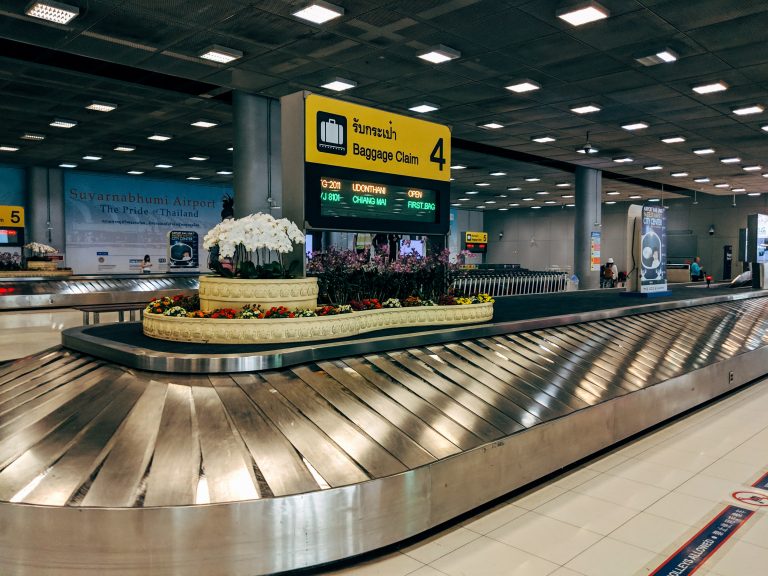A conveyor belt is a mechanical device that helps to transport goods from one end to another within an area and requires minimal effort. It is an efficient method with reduced labor costs and workplace risks. Airports, restaurants, warehouses, and industries are some places where you can find belt conveyors. The conveyor system reduces wait time and increases output.
The Birth of Conveyor Belts
In 1892, Thomas Robins invented the conveyor belt to carry natural resources. Multiple applications incorporated the belt in the coming years across different business operations. People wanted to transfer heavier goods across these belts as time went on. Sandvik, in 1901, designed steel conveyor belts to handle heavy loads. This made them popular among industries. Richard Sutcliff and Henry Ford introduced conveyor belts to the mining and automobile industries, revolutionizing industry production methods. Ever since, conveyer belts have become an irreplaceable part of modern day industry.
Parts Of A Belt Conveyor
A belt conveyor consists of three main parts: the belt’s support, the pulley, and the drive unit. Belts make transportation easier. They must be kept taut at all times to run smoothly. You should take extra care in checking the belt’s condition while transporting heavier loads. Any minor fault can cause lots of damage. The pulley is a means of driving the belt or redirecting it. It acts as the driving force for a conveyor belt. Also, the drive unit powers the whole system causing it to move. And a motorized drive unit keeps the parts moving smoothly. So, it can also move the unit in reverse.
Conveyor System Mechanism
Generally, conveyor belts follow a pulley system where the belt is stretched across two or more pulleys. The belt, in turn, forms a loop and rotates endlessly. The belt consists of a drive pulley powered by a drive motor. This drives the items across the belt, and other end is attached to a tension roller. The belt rests on a “skid” base which consists of two longitudinal runners called skids. This also creates a quiet and efficient transport process. The belt can transfer items in a straight line, around corners, and even move items between floors. You can also vary the speed of the belt, making it quicker in one section and slower in another for when the item needs inspection.
Types Of Belt Conveyors
Typically, belt conveyors are of three types:-
- Basic Belt consists of two or more pulleys holding a single long material belt. It is manually operated or motorized. The structure consists of various rollers installed at intervals along the length of the belt. The multiple rollers decrease the friction and transfer the items across. It is commonly used in the packaging industry, where minimal human intervention is needed. The belt is also installed at waist height to make it easy for the workers to carry out the packaging process.
- Snake Sandwich Belt – It gets its name due to how the material is sandwiched between two rubber belts and inclined to 90 degrees. Initially, its primary use was to transport rocks from a coal mine. Mining operations require mechanisms to access remote areas. This belt allows for the transfer of a high volume of goods at a consistent rate. The smooth surface of the belt enables easy cleaning and maintenance.
- Long Belt – It consists of three drive units and can transfer loads across long distances up to 13 km. This belt can function horizontally and vertically, giving it an advantage in mining operations and construction sites.
Selecting The Right Conveyor Belt
There are various factors to be considered while selecting a conveyor belt. They must be safe to operate, energy-efficient, and cost-effective. You must choose the conveyor belt’s length and width per the product you want to transport. Knowing your product is essential before choosing a conveyor belt. Some of the product specifications you should note are the weight, size, and product type. You should also look at the movement of your belt conveyor. If the belt moves vertically, the product might slip or fall. You can incorporate a stopper accordingly. Lastly, you should consider environmental conditions before choosing your belt. Many belts will not withstand extreme climate conditions.
Final Thoughts
Conveyor belts can boost your business operation and increase production. It is an ideal solution for faster transportation while keeping the products safe and intact. However, safety is essential while working with it. You should not wear loose clothing or step on the conveyor belt when it is in motion. Clean up any debris or lubricant spills before restarting the belt. With the proper knowledge, you can efficiently handle the use of a conveyor belt.


Thanks for sharing. I read many of your blog posts, cool, your blog is very good.
Tried the https://www.cornbreadhemp.com/products/seltzer-peach-iced-tea from Cornbread Hemp — the well-disposed with a eat of THC. Took one in the future bed. The flavor’s competent, measure dirty but pleasant. Around an hour later, I felt noticeably more nonchalant — not groggy, well-grounded peacefulness enough to wander disheartening without my wavering be decided racing. Woke up with no morning grogginess, which was a good surprise. They’re on the pricier side, but if you labour to unwind at cimmerian dark, they could be importance it.